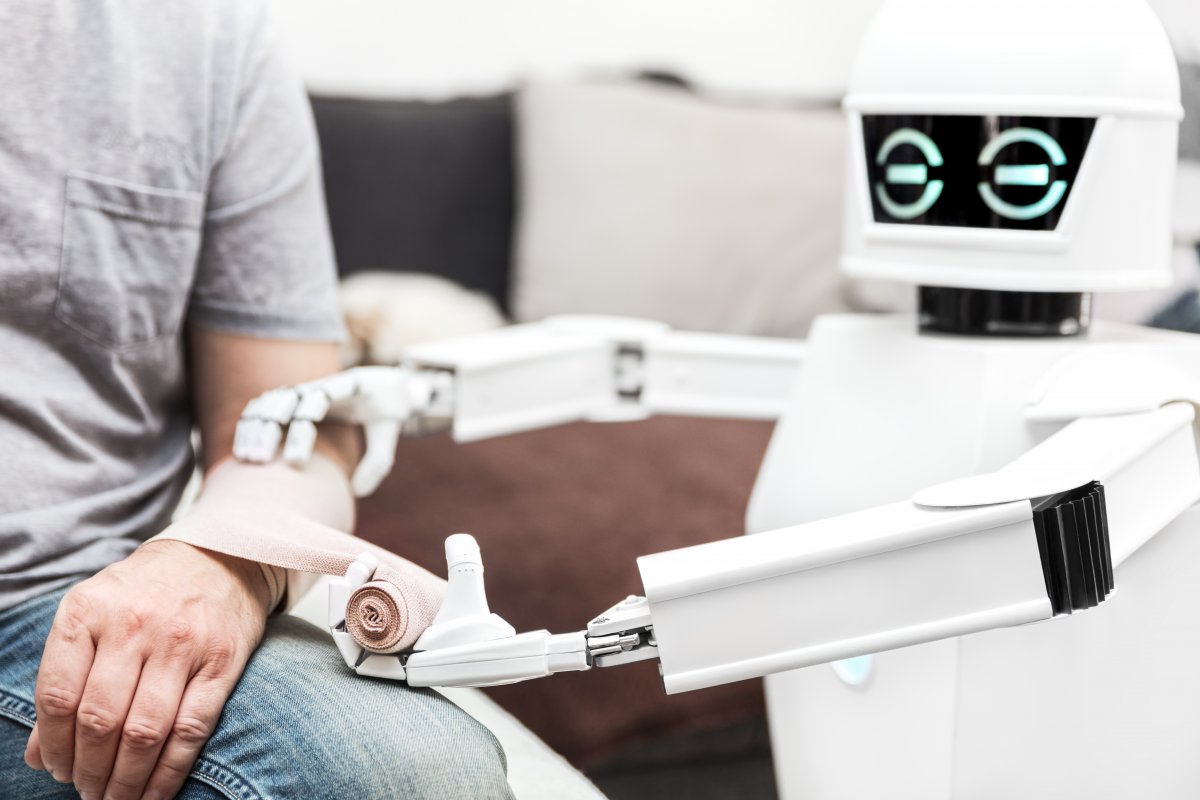Software for robots: In search of the lego block of robotics
Source: Heise.de added 14th Jan 2021Robots should get out of the factory halls. As service robots, they should also be useful on the streets, in offices, workshops and households. In the factories they should become more flexible in order to be able to meet individual customer requirements with the efficiency of mass production. But the requirement is not so easy to implement. An EU project that has now been completed should help.
There is a problem with the software Ten years ago, a study carried out by the Fraunhofer Institutes IPA and ISI identified the software as an important reason why the market for service robots developed much more slowly than hoped: “The development of software causes significant costs for manufacturers and integrators of service robots. In many cases, the scope and risk of the software required for typical service robot systems exceed the experience and resources of the potential outfitter ”, summarized the authors of the Effirob study and formulated a remedy:“ This could be counteracted by providing public repositories with standardized and reusable components Are made available and funded in order to reduce costs and risks through cooperative software engineering. “This is exactly the goal of the EU project RobMoSys, which has now come to a close.
Over a period of four years, RobMoSys had a budget of eight million euros to “improve software practice and project planning in European industry by creating an ecosystem of goods and services”, as project coordinator Huascar Espinoza from the French Commission for Alternative Energy and Nuclear Energy (CEA) now at the final conference enz of the project. Around half of the funds were to be passed on via cascade financing: As part of two open calls, companies and research institutes were able to apply for project funds of different amounts and durations. The projects should use the tools developed within the framework of RobMoSys, develop them further and be based on five scenarios.
RoboCup model These application scenarios, known as pilots, are partly reminiscent of competition categories at the RoboCup. For example, the scenario for goods transport within factories, similar to the Logistics League at RoboCup, uses the Robotino robot from Festo, while the task for mobile manipulation in the home environment, which is based on the TIAGo robot from PAL, is similar to the RoboCup @ home competition.
Basically RobMoSys strives for the virtual Lego brick of robotics. The software components should be able to be combined with one another as easily and in a variety of ways as the building blocks of the Danish toy manufacturer, explained Christian Schlegel (Technical University of Ulm). Several conference participants reported the first successes of this approach. Marta Millet (Robotnik) was able to point out that the navigation software developed as part of RobMoSys has proven to be very helpful in integrating the Summit-XL Steel transport robot developed by her company into a new industrial application, which, among other things, involves the Creation of environment maps, autonomous navigation and collaboration with human workers went. Carl Buckley praised the editing tool $ (LE: Papyrus4Robotics, which has proven to be easy to use and powerful. The C ++ coding for the open operating system ROS2 has been significantly accelerated.
More than just “Pick and Place” In a discussion, Luca Marchionni (PAL Robotics) praised the modular RobMoSys approach, saying that it was very helpful in keeping with the rapid market development Service robotics will probably develop in the same way as smartphones and platforms for a variety of apps, he suspects. As software is more and more crucial for performance, the robots need an abstraction layer that allows them to Andreas Bihlmaier (ABB Robotics) was convinced that robotics would not make progress if it did not develop into a horizontal industry modeled on personal computers, with components under from different manufacturers can be combined with each other
In order to realize robots that can be used not only for a narrowly defined purpose, but also in a variety of ways, more artificial intelligence is needed. “Robots that stubbornly carry out a preprogrammed pick-and-place movement without noticing that they have reached into space clearly show how much world knowledge they are still lacking,” says Bihlmaier. (mho)
brands: ABB Cea Crucial Develop Experience First MERCURY Million Mobile New other Space Summit media: Heise.de keywords: Mobile Operating System Software
Related posts
Notice: Undefined variable: all_related in /var/www/vhosts/rondea.com/httpdocs/wp-content/themes/rondea-2-0/single-article.php on line 88
Notice: Undefined variable: all_related in /var/www/vhosts/rondea.com/httpdocs/wp-content/themes/rondea-2-0/single-article.php on line 88
Related Products
Notice: Undefined variable: all_related in /var/www/vhosts/rondea.com/httpdocs/wp-content/themes/rondea-2-0/single-article.php on line 91
Warning: Invalid argument supplied for foreach() in /var/www/vhosts/rondea.com/httpdocs/wp-content/themes/rondea-2-0/single-article.php on line 91
